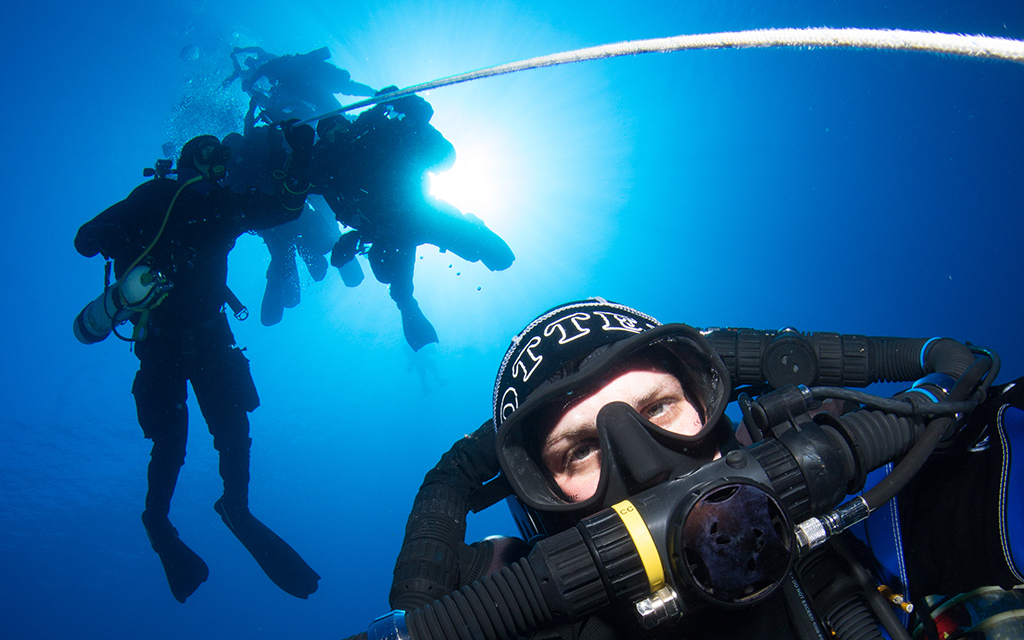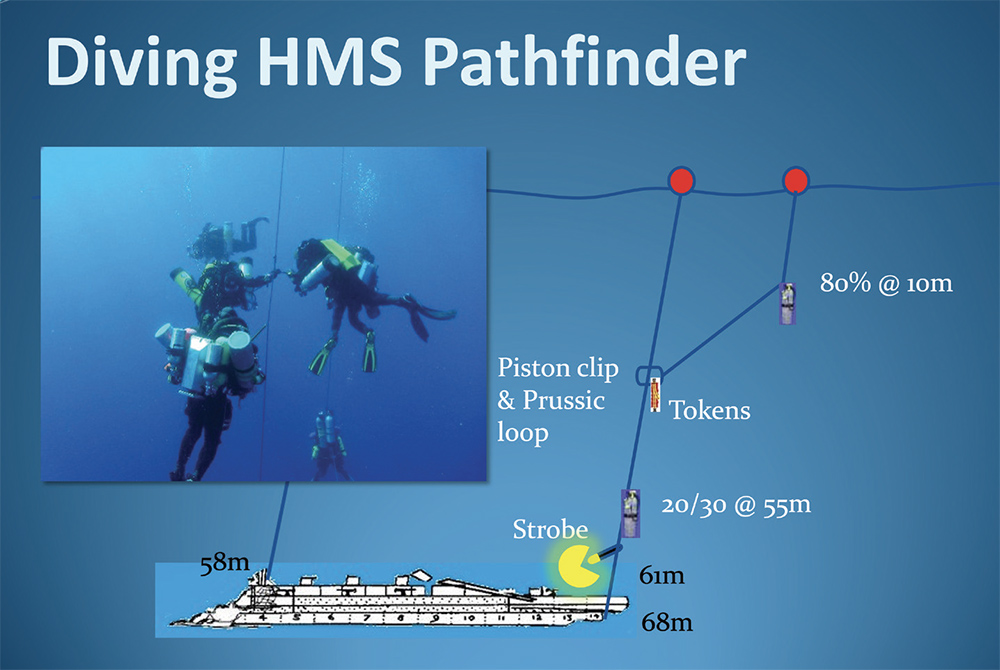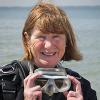
Photo credit: Marcus Blatchford
In her final column in this series, Jane Maddocks pays tribute to the technical divers at the forefront of shipwreck exploration.
‘We are on our way. Back in another four hours. Identified another deep wreck 100m deep off Land’s End.’ At that point I feel really excited by the whole world of new wreck discoveries as Leigh Bishop’s brief message hits my mobile.
The dives the Darkstar team are doing are seriously awe inspiring. They truly are taking it further, as we have seen in previous editions of SCUBA.
The skills required to dive to that level are not acquired overnight. They are the product of some seriously focussed work done over a few years with a clear ambition to dive safely over the 80m depth. The aim is to locate and identify wrecks in and around the 100m depth range.
As well as the time needed to hone these skills to a high level it helps to have a serious budget. CCRs, scooters, boat fees and time spent learning the skills involve major financial commitments - but the rewards are mind blowing. This summer I spent a week in the Red Sea with friends who are at that stage of honing planning and diving skills to take them to that next level of competence.
All day, each day, was spent planning, diving, debriefing and planning again. Total commitment - but then at 120 plus metres, that is what is needed. Soon, they too will be joining divers on deep wrecks in the UK, diving and identifying a wreck that can then have its story told to the public.
So, in my last ever column for SCUBA, why do I think what they and those who follow in their footsteps are important?
Sometimes, in the shiny new world of environmental issues, we can forget that so many divers are inspired by wrecks. For serious wreck divers, marine life may well resolve itself into edible or non-edible, round fish or flatfish – you get the picture – but the minutiae of wreck construction is a language they are comfortable with.
I love the notion of taking it further, deeper, with new discoveries. When I started diving, 30 metres was considered a serious dive; long planning, single 10l cylinders… don’t let go of the shot line! Now I see the new technologies taking divers to 100m and yes, I am envious.
But it also means that those deeper, lost shipwrecks can have their stories told to the public. The story becomes important. First there is the story of the research to try to find the position of a vessel and to identify what was known, or possibly known. Then there is the planning, fixing the position, doing the dive, finding those identifying features, and finally being able to say, ‘yes, this is SS Tourmaline’, or whatever.
Then comes the all-important task of making that ship’s story accessible to the public. At that point the ship and her crew are no longer lost, but brought back into memory.
‘Back into memory’ may seem a bit OTT, but in my other life I know it is still important for descendants who may be given this chance to connect with their family past.

In 2014 BSAC members dived HMS Pathfinder to commemorate 100 years since her loss on 5th September 1914 to a German torpedo. Descendants of the crew members came from Canada to lay a wreath for her. In 2019 BSAC members dived the Normandy wrecks and had a huge commemorative service at the Royal Marines Monument overlooking Port en Bessin. Round the back of the Isle of the Wight we have a merchant navy wreck from the Second World War that is gradually opening up. One of our divers is tasked to find a watch for the granddaughter of one of the engineers.
Finally, each year I am privileged to lay a wreath during the Merchant Navy Memorial Service on Tower Hill to commemorate all those merchant seamen who died in two world wars to keep us fighting and fed. Their stories are important and the deep diving tekkies are truly taking it further.
Article ‘In praise of deep wreck divers’ by Jane Maddocks first published in SCUBA magazine, Issue 150 November 2024.

 Author: Jane Maddocks | Posted 22 Nov 2024
Author: Jane Maddocks | Posted 22 Nov 2024



